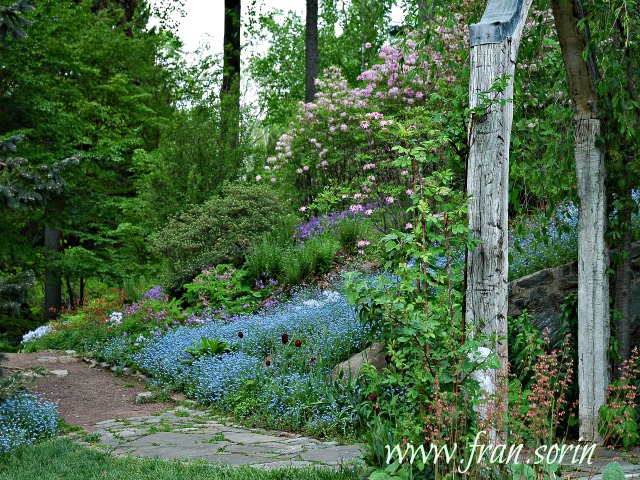Are you dreaming about curling up on a chilly winter's day with a great gardening book? Then here is your chance. I am giving away a copy of this new book about the iconic British garden, Sissinghurst. Details at the end of this post.
When Vita Sackville-West first visited Sissinghurst it was love at first sight. She wasn't deterred by the crumbling buildings and walls, all that remained of a former Elizabethan Hunting palace. She turned to her then 12 year old son and said, 'I think we shall be happy in this place' and so she was. From May 1930 until 1962 she and her husband, Harold Nicolson, designed and planted the gardens at Sissinghurst castle.
The garden has an incredible history, and who better to tell the story than Sarah Raven who is married to the Nicolson's grandson. With access to all the writings, personal photographs of the Nicholsons and having lived at Sissingurst, Sarah is eminently equipped to tell the story of this garden. She shares the story with Vita herself whose writings are also included in the book.
I was surprised when the book arrived to find it a rather chunky 6"x 9" So much easier to handle than the usual books about gardens. Divided into 3 major parts and amply illustrated with family photos of the garden through time, it is easy to see that Vita fulfilled her dream. A dream which is now in the care of the National Trust.
Sarah Raven called upon the many writings of Vita, who wrote gardening columns in the Observer newspaper and Country Life magazine, her own garden journals and letters to Harold about the garden. The book is divided into 3 major sections.
Part 1 is about The People and the Place.
Part 2 Vita's Garden Themes. Descriptions of the roses and other plantings in the garden are to be found here as well as planting on walls, pruning, shrubs and seasonal advice.
Part 3 The Smaller Canvas. The seasons of painterly plants, cutting gardens and containers for indoors and out.
She has advice that I might well take myself. 'I advise every gardener to go around his garden now-and make notes of what he thinks he ought to remove and of what he wants to plant later on.'
How I loved to read about her style of gardening, not unlike my own. ' She also liked the abundance self sowing gave you, the miraculous appearance suddenly of of many hundreds of Californian poppies in the cracks of the Lime Walk paths which she banned the gardeners from weeding out' 'It was to be hospitable to wildlings'
 |
| My photo of the gardens from the tower, 2004 |
I requested the book to review partly because I have visited Sissinghurst on two occasions at which time I knew only a little of the history or of the making of the garden. I now feel equipped for a return visit. Whether on not you have the chance to visit this garden you will enjoy reading the story of how it came to be as well as the practical gardening information included in the book.
Vita Sackville-West was born in 1892 at Knole in Kent. She was an award winning poet, garden writer and published 12 novels. She died at Sissinghurst in 1962
Sarah Raven has written many books on gardening, cooking, flower arranging as well as gardening programs on TV. She runs her own cookery school at her nearby farm.
The book is published in the USA by St Martin's Press, New York.
If you would like the chance to win this book then please leave a comment on this posting. I will choose the winner by random number and announce the winner on the evening of December 14th. Please leave information on where you can be reached in the comment. Offer open to US residents only.
UPDATE. THE WINNER OF THE RANDOM BOOK DRAWING IS TEXAS DEB. CONGRATULATIONS.














































